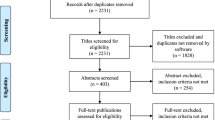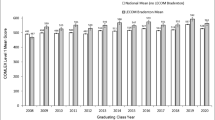Abstract
Objectives: To assess the validity of an educational method of vertical integration as a transitional stage from discipline-based to fully integrated medical curriculum in a community oriented medical school. Methods: involved a quarterly “Integrative Medical Education Symposium (IMES)” series targeting third- and fourth-year medical students. This series handled one or more clinical topics per symposium, which were carefully selected by the IMES Committee. The topics were presented in a Problem/ Case-Based Learning (PBL) format with interactive discussion of differential diagnosis of the case. Occasionally, actors portrayed patients. Upon conclusive diagnosis, integrated basic sciences and clinical reviews of the topic were presented in different ways. At the end of each symposium, students were invited to complete a 5-point Likert scale survey, which involved 6 questions to evaluate clinical and basic science education, integration, student interaction, effect on diagnostic skills, and overall program efficacy. Each question’s data collected from eighteen IMES series were analyzed and classified into two groups; accept and reject. The “accept” group represented the sum of students who “strongly agree” (score “5” on Likert scale) and simply “agree” (score “4” on Likert scale) of a survey question. The “reject” group represented the sum of students who “strongly disagree” (score “1” on Likert scale) and simply “disagree” (score “2” on Likert scale) of the same survey question. The two groups of each question were then statistically compared to each other using students’-test, where p<0.05 indicates significant value. Results: Five of the six survey questions demonstrated that a significant number (p-value<0.009) of student responses (n=813 − 942, representing seventy seven to eighty nine percent of the total number student responses) were supportive to the program. The overall IMES program effectiveness reported eighty one percent (n=855) in favor of “accept” group, which is significantly different from “reject” group for this item (p<0.002). The only survey question that showed insignificant difference between “accept” and “reject” groups was the level of students’ interaction throughout the symposium. Conclusion: IMES is a useful experience as a transitional program towards integrated curriculum, since it revealed many challenges that may affect the integration process.
Similar content being viewed by others
References
Bradley P, Mattick K. 2008. Integration of basic and clinical sciences. AMEE; 2008
Snyman WD, Kroon J. Vertical and horizontal integration of knowledge and skills- a working model. 2005; Eur J Dent Educ. 9:26–31
Dahle LO, Brynhildsen J, Fallsberg MB, Rundquist I, Hammer M. Pros and cons of vertical integration between clinical medicine and basic science within a problem-based undergraduate medical curriculum: examples and experiences from Linkoping, Sweden. Medical Teacher. 2002;24(3):280–285
Woodman OL, Dodds AE, Frauman AG, Mosepele M. Teaching pharmacology to medical students in an integrated problem-based learning curriculum: an Australian perspective. Acta Pharmacologica Sinica. 2004;25(9):1195–1203
Schmidt H. Integrating the teaching of basic sciences, clinical sciences and biopsychosocial issues. Academic Medicine. 1998;73(9):S24–S31
Abramovitch H, Shenkman L, Schlank E, Shoham S, Borkan J. A tale of two exposures: a comparison of two approaches to early clinical exposure. Educ Health (Abingdon). 2002;15(3):386–90
Halasz NA. We create and can remove the roadblocks to good basic science education. Acad Med. 1999;74(1):6–7
Hollander H, Loeser H, Irby D. An anticipatory quality improvement process for curricular reform. Acad Med. 2002;77(9):930. Review
Harden, RM, Laidlaw, JM. Task-based learning: an educational strategy for undergraduate, postgraduate and continuing medical education, part 1. Medical Teacher. 1996;18(1): 7–13
Harden, RM, Laidlaw, JM. Task-based learning: an educational strategy for undergraduate, postgraduate and continuing medical education, part 2. Medical Teacher. 1996;18(2): 91–98
Author information
Authors and Affiliations
Corresponding author
Rights and permissions
About this article
Cite this article
Marreez, Y.M.A.H., Wells, M., Eisen, A. et al. Towards Integrating Basic and Clinical Sciences: Our Experience at Touro University Nevada. Med.Sci.Educ. 23, 595–606 (2013). https://doi.org/10.1007/BF03341687
Published:
Issue Date:
DOI: https://doi.org/10.1007/BF03341687




